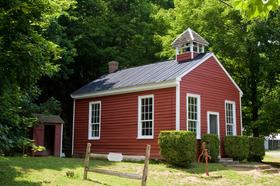Top Rankings
Wahkiakum School District ranks among the top 20% of public school district in Washington for:
Category
Attribute
Graduation Rate
Highest graduation rate (Top 20%)
For the 2025 school year, there are 2 public schools serving 412 students in Wahkiakum School District. This district's average testing ranking is 7/10, which is in the top 50% of public schools in Washington.
╬█╬█┬■╗ş Schools in Wahkiakum School District have an average math proficiency score of 37% (versus the Washington public school average of 40%), and reading proficiency score of 54% (versus the 53% statewide average).
Minority enrollment is 21% of the student body (majority Hispanic), which is less than the Washington public school average of 52% (majority Hispanic).
Overview
This School District
This State (WA)
# Schools
2 Schools
2,565 Schools
# Students
412 Students
1,102,128 Students
# Teachers
25 Teachers
62,276 Teachers
Student : Teacher Ratio
16:1
16:1
Student By Grade
District Rank
Wahkiakum School District, which is ranked within the top 50% of all 306 school districts in Washington (based off of combined math and reading proficiency testing data) for the 2021-2022 school year.
The school district's graduation rate of 90% has increased from 80% over five school years.
Overall District Rank
#115 out of 307 school districts
(Top 50%)
(Top 50%)
Math Test Scores (% Proficient)
36%
40%
Reading/Language Arts Test Scores (% Proficient)
53%
53%
Science Test Scores (% Proficient)
45-49%
49%
Graduation Rate
≥90%
84%
Students by Ethnicity:
Diversity Score
0.36
0.69
% American Indian
1%
1%
% Asian
1%
9%
% Hispanic
12%
26%
% Black
n/a
5%
% White
79%
48%
% Hawaiian
n/a
2%
% Two or more races
7%
9%
All Ethnic Groups
District Revenue and Spending
The revenue/student of $18,636 in this school district is less than the state median of $18,796. The school district revenue/student has grown by 17% over four school years.
The school district's spending/student of $18,898 is less than the state median of $19,246. The school district spending/student has grown by 17% over four school years.
Total Revenue
$8 MM
$20,715 MM
Spending
$8 MM
$21,212 MM
Revenue / Student
$18,636
$18,796
Spending / Student
$18,898
$19,246
Best Wahkiakum School District ╬█╬█┬■╗ş Schools (2025)
School
(Math and Reading Proficiency)
(Math and Reading Proficiency)
Location
Grades
Students
Rank: #11.
Wahkiakum High School
(Math: 30-39% | Reading: 80-89%)
Rank:
Rank:
8/
Top 30%10
500 South 3rd Street
Cathlamet, WA 98612
(360) 795-3271
Cathlamet, WA 98612
(360) 795-3271
Grades: 9-12
| 141 students
Rank: #22.
Julius A Wendt Elementary/john C Thomas Middle School
(Math: 35-39% | Reading: 45-49%)
Rank:
Rank:
5/
Bottom 50%10
265 South Third St
Cathlamet, WA 98612
(360) 795-3261
Cathlamet, WA 98612
(360) 795-3261
Grades: K-8
| 271 students
Frequently Asked Questions
How many schools belong to Wahkiakum School District?
Wahkiakum School District manages 2 public schools serving 412 students.
What is the rank of Wahkiakum School District?
Wahkiakum School District is ranked #113 out of 306 school districts in Washington (top 50%) based off of combined math and reading proficiency testing data for the 2021-2022 school year. This district ranks in the top 20% of Washington school districts for: Highest graduation rate (Top 20%)
What is the racial composition of students in Wahkiakum School District?
79% of Wahkiakum School District students are White, 12% of students are Hispanic, 7% of students are Two or more races, 1% of students are American Indian, and 1% of students are Asian.
What is the student/teacher ratio of Wahkiakum School District?
Wahkiakum School District has a student/teacher ratio of 16:1, which is lower than the Washington state average of 18:1.
What is Wahkiakum School District's spending/student ratio?
The school district's spending/student of $18,898 is less than the state median of $19,246. The school district spending/student has grown by 17% over four school years.
Recent Articles

Segregation in K-12 Education: Colonial Era
Explore the origins of educational segregation during the colonial era and the differential treatment of Native American, African American, and white students. This article delves into the historical context, policies, and societal attitudes that shaped early education in colonial America, highlighting the disparities and injustices that persisted within the schooling systems of that time.

2011 Classroom Size Update: Are Classes Still Growing Larger?
Since the recession, public school classrooms have seen major budget cuts - and many increases in class sizes. How is the situation in 2011? Read this article to find out.

Will Single Sex Classrooms Save ╬█╬█┬■╗ş Schools?
Learn about the benefits of single sex classrooms and why public schools are hoping this type of classroom will save the American school system.





